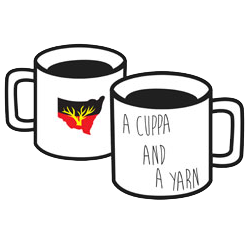18 February, 2015
“Country is our substance, it’s what’s created us, it’s what stimulated us, and it’s made us who we are today. It’s also given us the opportunities to prosper and plan for the future.”
The mob at the Coffs Harbour and District Local Aboriginal Land Council (LALC) are passionate about culture, healing land, supporting their children in education and providing much needed accommodation for their members.
They have a number of projects under way, including a homework centre for school-aged kids, a land regeneration program called Durrunda Wajarr and they are just about to start Jaliigirr Barrigan, a native tree nursery. Both names are from the local Gumbaynggirr language.
But at the forefront is housing, a portfolio of 55 homes ranging from one-bedroom share accommodation through to six-bedroom family homes.
Coffs Harbour and District LALC CEO Chris Spencer says they provide housing for between 100 and 250 people in the Coffs Harbour area, which is nowhere near enough to meet the demand.
” I still have nearly 80 families who are waiting for housing,” he said.
Despite this he says they are ideally positioned to economically grow the Land Council through their housing portfolio.
However, like other Local Aboriginal Land Councils, their ability to move forward economically was recently put at risk.
A year ago, the Coffs Harbour and District LALC won a land claim appeal over Red Rock on the beautiful Northern Coast, 20 years after the original claim was lodged on behalf of the Garby elders, the original custodians of the land.
The win led to the NSW Minister for Natural Resources, Land and Water and Western NSW Kevin Humphries introducing controversial legislation, the 2014 Crown Land Amendment Bill, to stop land claims on NSW coastal areas. Mr Humphries, misled the public by falsely stating successful land claims prevented public access.
“What Minister Humphries failed to disclose to his fellow parliamentarians was that there were easements created in the Land and Environment (Court) ruling, particularly around public access and emergency service… which is for essential public purpose and public access,” Mr Spencer said.
“If this particular Bill was to go through, it would hinder our ability to create economic development, as Government has indicated they wish us to do, and also the New South Wales Aboriginal Land Council. With this legislation being introduced and potentially passed, it created a whole new myriad of problems around our economic development aspirations and we need land to grow our economic base,” he said.
The Crown Lands Amendment Bill was quickly withdrawn following public and political opposition. But Minister Humphries plans on re-introducing the Bill, although at this point it is unclear if the content will be unchanged.
And while it would be a disastrous result economically if the ability to claim land was taken away, the biggest and most damaging cost would be the loss of culture and the ability to connect with country, and more importantly fulfilling their cultural responsibilities in looking after the land.
“This area referred to as the red Rock claim, contains areas that our community refers to as Hogan’s Hole and wash away, very important areas for resource gathering, in particular fishing and hunting grounds but it was also an area where there were open camp sites. Community to this day, still use those areas for camping,” he said.
“We’ve got a lot of natural resources there – bush medicines and bush foods, that’s why the campsites were there originally. Being on the coastal fringe, it’s important that fresh water is accessible. The old people knew where there were fresh wells and those sorts of things in that land, less than 200 metres from the actual ocean, which is phenomenal when you think about it, ” Mr Spencer said.
A related project at the heart of the Coffs Harbour and District LALC is Durrunda Waajar, meaning to fix or repair country. The native bush regeneration program has run successfully for nine years, providing training and employment which for some people has been a stepping stone to jobs with Rural Fire Service and National Parks.
“On the Red Rock land, we’re working on our Jaliigirr Barrigan native tree nursery. It’s going to stimulate and complement our natural resource management activity because at the moment we’re purchasing plants from other nurseries,” he said.
Mr Spencer said the LALC sees a great opportunity to develop their land, create more education, training and employment.
For Coffs Harbour and District LALC, education is also extremely important which is why they developed Miindalaygan Maam, a cultural learning based homework centre. It’s a place where children can go after school to access tutorial support. They currently have a participation rate of between 20-30 kids a week.
Miindalaygan Maam is based at the Coffs Harbour and District LALC office which according to Mr Spencer helps kids get an earlier introduction to LALC’s.
“It’s very important that our young people are very involved in what we do at a Land Council level, but more importantly – they’re our future leaders. If we don’t provide an opportunity or an avenue for our young people to be able to be engaged, be a part and feel a part of a Land Council, then I feel that we are failing our elders that have gone before us,” he said.


